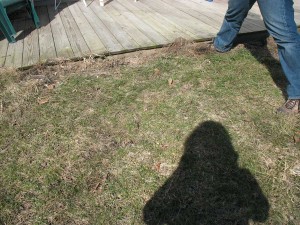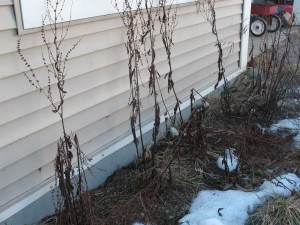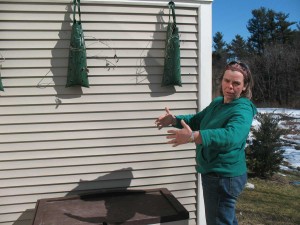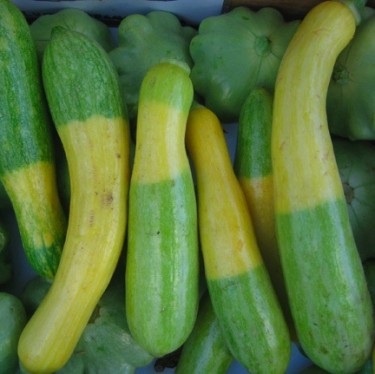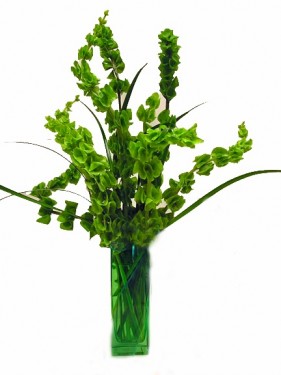Oh, my garden is perfect in March - all imagined blue blossoms and bursting red tomatoes and lush with shiny leaves. I can picture it so well in these days before reality has arrived. But still, I'm excited for the real thing, the dramas and surprises and smells and harvest. And I'm looking forward to sharing my amateur garden adventures here on the Red Wagon Plants blog this season. I'm a Burlington mom, an enthusiastic though not terribly skilled gardener, food-lover, fund-raiser and marketer. I blog about my parenting and food adventures over at crankycakes.com, and Julie's asked me to write about real life with Red Wagon plants through the growing season. Last week she came over to talk about our plans, and we took a stroll around my Burlington condo, looking at the remnants of last year's garden that haven't yet been cleaned and gotten ready for the season. It isn't pretty, but there's all that March imagination - and there was Julie with her excitement and amazing knowledge.
We talked about my goals, and looked at the space. Within a general theme of edible landscaping, I want to grow:
- Beautiful plants that we can enjoy through the season.
- More of the things I never get enough of through our CSA share (especially tomatoes).
- Plants that will help with my gift-giving for the holidays. Last year I made some crazy nasturtium liqueur and I want to do more with cordials from the garden. Plus I'm aspiring to make hot sauce to share.
I showed Julie my challenging spots - the north-facing edge that faces our neighbors' units where I grew red-veined sorrel last year (pretty leaves, but unwieldy and inedible). Julie suggested currants, which will tolerate lots of shade, plus give us flowers and fruit.
We looked at the north-east corner where I don't have anything except one gooseberry bush planted. Julie wondered about making this shady spot a garden for pollinators - bees, birds and butterflies. She pulled out her laptop and pulled up a long list of plants that could be in the shade. We agreed on:
The longest side of my house faces east, which means a short day of direct light. Last year, I had grown leeks (never got bigger than scallions), chard, kale, and other greens there, along with a big patch of nasturtiums. After talking about what I wanted, we settled on:
- Rhubarb (I've been interested in rhubarb for a while but because I have young children, I've been scared of the leaves that I had always heard were terribly toxic. Last year I learned that it would take 10 lbs. of leaves to reach actual lethal levels, so I now can relax and allow it in the garden.)
- Cilantro
- Parsley
- Dill
- Bronze fennel
- Bulb fennel
- Chives
- Chervil
- Meadow rue
We walked around to the south, where we talked about taking advantage of the heat and light and growing pots of tomatoes and vines along a south-west wall, and putting in a container with:
- Hot peppers (anchos, Boldog Hungarian, and Cherry Bomb)
- Shallots
- Nasturtiums (also will be used to shade out grass next to the raised bed so I won't have to mow too close to its border)
- Various thymes
So our plans are big, and the plants are growing. Can't wait to get started.

